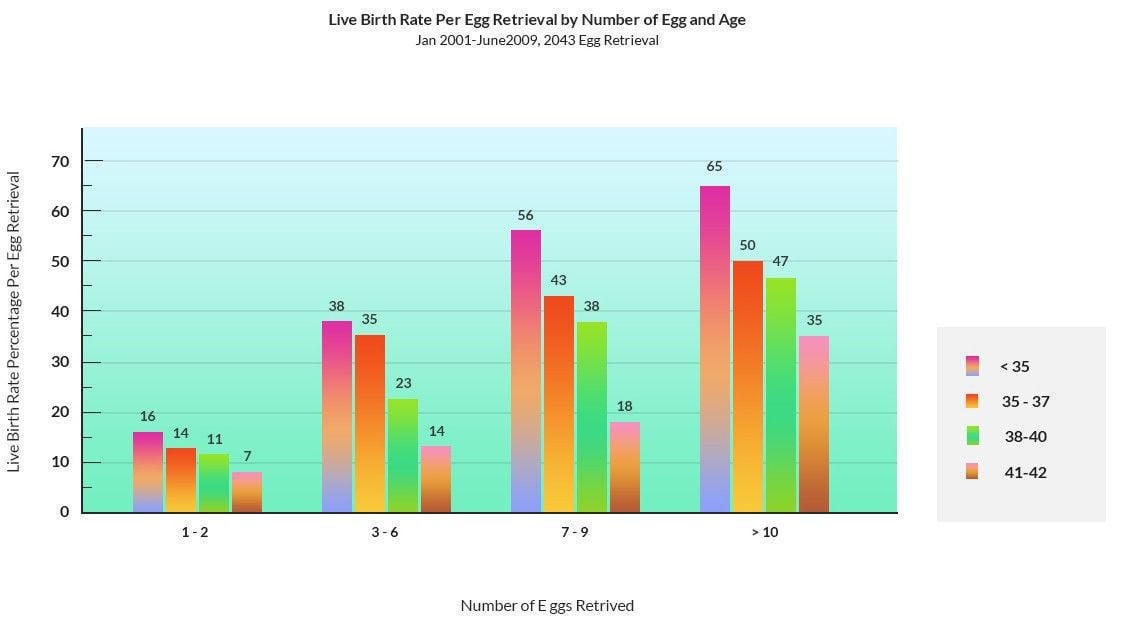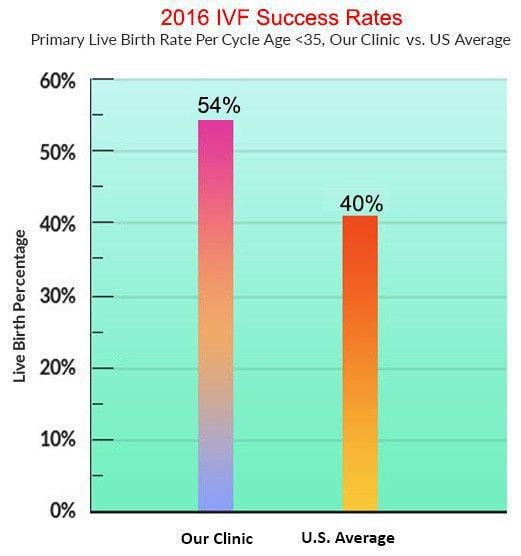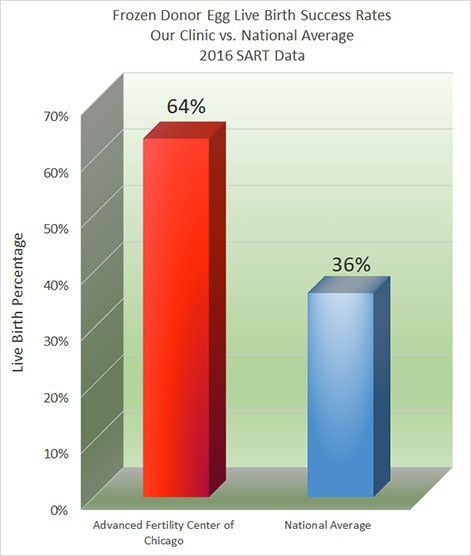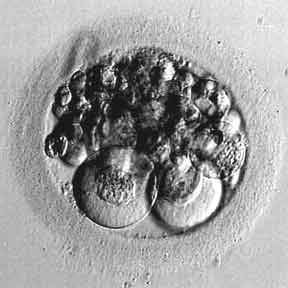
IVF and Age - Impact of Female Aging on In Vitro Fertilization Statistics
Both egg quantity and egg quality are very much related to female age
Testing Egg Quality and Quantity
We do not have a test foregg quality. The best test of egg quality is actually the woman's age. Egg quality translates over to embryo quality - which is by far the most important factor determining if IVF works. We do have testing for egg quantity that we call "ovarian reserve" tests. These egg supply tests are discussed elsewhere.
In Vitro Fertilization Success Rate Statistics by Female Age
We will use charts and graphs to illustrate important points about age and IVF success.See our IVF success ratesThe graphs below are from the 2014 ART Success Rates report published by the CDC, Centers for Disease Control and Prevention, a US government agency. The report summarizes national data from about 450 clinics and about 200,000 IVF treatments.
This chart is US national average data on success rates per IVF cycle by female age for 2014. The dark blue line (triangles) shows pregnancy rates per cycle by age. The orange line (circles) shows live birth rates per cycle by age. The rate of singleton live births per cycle is shown by the light blue line. The difference between "pregnancy" rate and "live birth" rate is due to miscarriages.
- The data shows the impact of advancing female age on IVF success.
- We can see that the success rate curve starts dropping at about age 30
- It drops faster starting at about age 35 - and then the drop is linear down to 1% live birth success rate by age 45
This chart is also from the 2014 CDC Report. The IVF live birth rates per cycle started for different age groups are circled in red. The percent of IVF cycles that made it as far as an egg retrieval, an embryo transfer and a pregnancy are also shown.
- As women age the probability of reaching egg retrieval or embryo transfer drops
- This is because the rate of IVF cycle cancellation increases with aging
- With aging, the probability of pregnancy and live birth drops even more
- This is because the rate of embryo implantation decreases with age
- Decreased embryo implantation is due to embryo quality issues
- The decline in embryo quality is due to increasingchromosomal abnormalities in eggswith advancing age
- Chromosomal abnormalities in embryos can be screened for prior to transferring with preimplantation genetic screeniing, PGS
- Miscarriage rates increase with age
- Shown by the difference in "pregnancy" and "live birth" rates on this graph
- Increased miscarriage rates are also due to increased rates of chromosomally abnormal embryos
US National Average IVF Live Birth Rates and Our Program's Statistics for 2016
Our IVF success rates exceed national averages
IUI Success Rates
Our success rate for IVF in 2016 (age < 35) was 54% and the national average was 40%.
Our egg donation success rate for 2016 was 88% and the national average was 50%.
Data above is from the 2016 SART Report Links to the SART and CDC Reports- check any clinic's success rates
High quality IVF results in better embryo qualitywhich leads to better chances for successful outcomes - at any age.
Low quality day 3 embryo
Significant cellular fragmentation is evident.
High quality day 5 blastocyst
This embryo has a high chance to implant.Blastocyst transfercan increase implantation.
More IVF embryo pictures
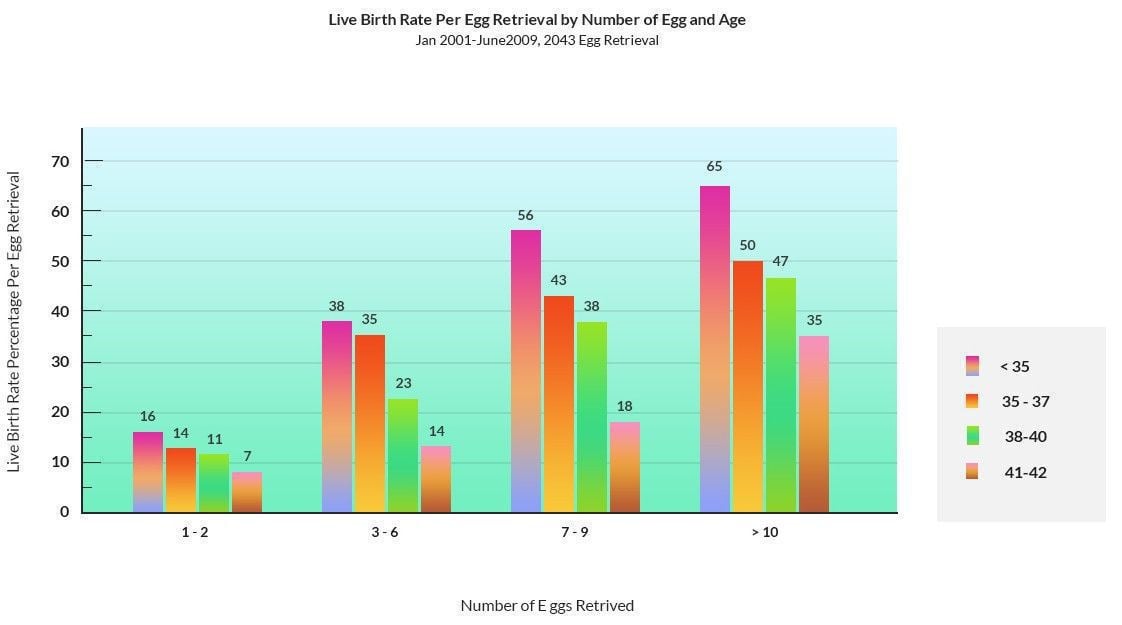
- The graph above shows that on the average IVF success rates using own eggs starts to drop at about 30 and drops faster in the mid 30s and early 40s. This drop is caused by decreasing egg quantity and quality.
- Live births are rare at age 44 and above using the female partner's eggs.
- There is no drop in success rate with age when using young donor eggs.
- The age of the eggs is very important.
- The age of the recipient (uterine age) has very little effect on success rates when using donor eggs.
- Most donors are in their 20's - so the "egg age" is excellent with egg donation cycles.
Details of Dr. Sherbahn's research on recipient age and donor egg success rates
Available Treatment for Infertility: In Vitro Fertilization
Many infertility doctors recommend that women over about 38 that are infertile should have aggressive treatment and proceed to in vitro fertilization (IVF) relatively quickly - before all fertility potential is lost.
Most IVF centers are willing to attempt IVF using the female partner's eggs until about age 44 or 45, after which the couple would be offered egg donation as the only realistic advanced fertility treatment.
- IVF centers in the US do not all use the same upper age cutoff
- Some clinics do not offer IVF beyond age 42 - others will go to 46 or 47 with own eggs
Categories
About the AFCC Blog
Welcome to the Advanced Fertility Center of Chicago’s blog! Here, you will find information on the latest advancements in fertility care and treatments, including IVF, IUI, third-party reproduction, LGBTQ+ family building, preimplantation genetic testing, and more. Since 1997, we’ve used our experience and continuous investment in the latest fertility technology to help thousands of patients grow their families. Contact us today for more information or to schedule a new patient appointment.


